

Apparitions of the Virgin Mary to Mary Ann Van Hoof at Necedah—George Washington's Vision of the Beautiful Lady. Apparitions of the Virgin Mary to Mary Ann Van Hoof Our HoIy Mother, or as Alexander III calls her, the Madonna Maria, has from the very beginning favored this country, the New World.

It is strictly and only through this aid from Heaven that this country, and particularly our nation, the United States of America, has become the great nation that it is today. We have become the greatest, most powerful, most prosperous nation on earth, but most people are not willing to give credit where credit is due, and man is taking the credit unto himself. Had it not been for the intercession of the Madonna Maria' on several occasions when we faced superior odds and seemingly unsurmountable obstacles, we would have been destroyed.
Why God and His Holy Mother have lavished Their love, Their bounty, prosperity and power on so ungrateful, so thankless a nation only They can answer. "The Fifth Siege is now...” These revelations need no interpretation, nor does the above statement. The B'nai B'rith. George Washington's Prophesy. The father of our country, George Washington, was a man of prayer.

We have all read of how he went to the thicket many times to pray during the winter his army was at Valley Forge. However, little publicity has been given to the vision and prophecy he received at that time. The account of this vision was given in 1859 by an old soldier. He gave it to a writer, Wesley Bradshaw, who published it. In the vision God revealed to George Washington that three great perils would come upon the Republic. Sermon commemorative of the life, character, and services of the Hon. Elisha Whittlesey, of Canfield, Ohio : delivered in the First Presbyterian Church, Washington, D.C., on Sunday evening, January 10, 1864 : Sunderland, Byron, 1819-1901 : Free Download & Letter of Isaac O. Barnes, late marshal of the United States for the District of Massachusetts microform : to the Hon. Elisha Whittlesey, first Comptroller of the Treasury of the United States, relating to certain bills of costs on indictments in the Dist.
Full text of "Genealogy of the Whittelsey-Whittlesey family" Chsbull v36 n3 old 193. Gathering Song of Donald the Black, by Sir Walter Scott. Google Play. The History of the Western Highlands and Isles of Scotland. Sir Walter Scott (1771-1832). Pibroch of Donald Dhu. William Stanley Braithwaite, ed. 1909. The Book of Georgian Verse. Pibroch Of Donald Dhu - Full Online Book. Pibroch of Donald Dhu (This is a very ancient pibroch belonging to Clan MacDonald.
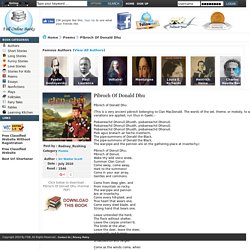
Pibroch Of Donail Dhu Poem by Sir Walter Scott - Poem Hunter. Pibroch of Donuil Dhu,Pibroch of Donuil,Wake thy wild voice anew,Summon Clan-Conuil.Come away, come away,Hark to the summons!

Come in your war array,Gentles and commons. Come from deep glen andFrom mountain so rocky,The war-pipe and pennonAre at Inverlochy.Come every hill-plaid andTrue heart that wears one,Come every steel blade andStrong hand that bears one. Sing me a Song of a Lad that is Gone by Robert Louis Stevenson. Pibroch O'donald Dhu / Skye Boat Song / Mhairi's Wedding / Rainbow Country / Blue Bells of...
Pibroch Of Donald Dhu - Full Online Book. Google Play. George Bugg. Originally published in Journal of Creation 12, no 2 (August 1998): 237-252.
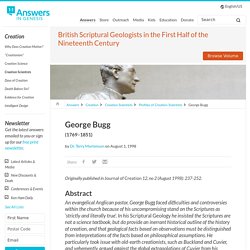
An evangelical Anglican pastor, George Bugg faced difficulties and controversies within the church because of his uncompromising stand on the Scriptures as ‘strictly and literally true’. Scotland in the Wars of the Three Kingdoms - Wikipedia. Clan Livingstone - Celtic Abbots. The Status of Celtic Abbots The status of Celtic Abbots was demonstrably very high as can be seen from these examples: Sir Farquhar Mac an t-Sagairt (son of the priest), hereditary Abbot of Applecross, was made first Earl of Ross in 1235 by King Alexander II, for military services.
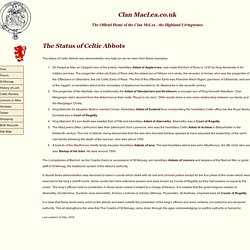
The progenitor of the old Earls of Ross was the eldest son of Gilleon na h-airde, the ancestor of Anrias, who was the progenitor of the O'Beolans or Gillanders, the old Celtic Earls of Ross. Coarb. How the family came to be the Coarb of St Moluag, Keeper of his pastoral staff and Hereditary Abbot of Lismore is uncertain.
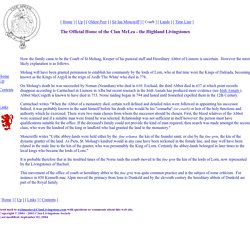
However the most likely explanation is as follows. Moluag will have been granted permission to establish his community by the lords of Lorn, who at that time were the Kings of Dalriada, becoming known as the Kings of Argyll in the reign of Aedh 'The White' who died in 778. On Moluag's death he was succeeded by Neman (Neamhan) who died in 610. Eochaid, the third Abbot died in 637 at which point records disappear according to Carmichael in Lismore in Alba but recent reserach in the Irish Annals has produced more evidence (see Irish Annals ). The Ulster Civil War, 1641. "The King's Commission" in the County Cavan (Continued) on JSTOR. The Eleven Years War 1641-52 – A Brief Overview.
History - Wars and Conflicts - Plantation of Ulster - Engish and Scottish Planters - 1641 Rebellion. Battle of Clontarf - Wikipedia. The Battle of Clontarf (Irish: Cath Chluain Tarbh) was a battle that took place on 23 April 1014 at Clontarf, near Dublin, on the east coast of Ireland.

It pitted the forces of Brian Boru, High King of Ireland, against a Norse-Irish alliance comprising the forces of Sigtrygg Silkbeard, King of Dublin, Máel Mórda mac Murchada, King of Leinster, and a Viking contingent led by Sigurd of Orkney and Brodir of Mann. It lasted from sunrise to sunset, and ended in a rout of the Viking and Leinster forces. It is estimated that between 7,000 and 10,000 men were killed. Although Brian's forces were victorious, Brian himself was killed, as were his son Murchad and his grandson Toirdelbach. Leinster king Máel Mórda and Viking leaders Sigurd and Brodir were also slain. The battle was an important event in Irish history and is recorded in both Irish and Norse chronicles. Background[edit] Map of the larger Irish kingdoms in 1014 Revolt of Dublin and Leinster[edit] Battle[edit] 1. Aftermath[edit] Coarb - Wikipedia. A coarb, from the Old Irish comarbae (Modern Irish comharba), meaning "heir" or "successor",[1] was a distinctive office of the later medieval church among the Gaels of Ireland and Scotland.
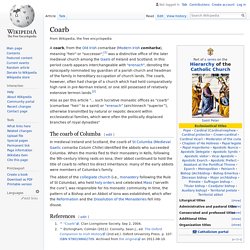
In this period coarb appears interchangeable with "erenach", denoting the episcopally nominated lay guardian of a parish church and headman of the family in hereditary occupation of church lands. The coarb, however, often had charge of a church which had held comparatively high rank in pre‐Norman Ireland, or one still possessed of relatively extensive termon lands.[2] Also as per this article "... such lucrative monastic offices as “coarb” (comarbae “heir” to a saint) or “erenach” (airchinnech “superior”), otherwise transmitted by natural or nepotic descent within ecclesiastical families, which were often the politically displaced branches of royal dynasties" Sir Felim O'Neill. From A Compendium of Irish Biography, 1878 « Hugh O'Neill, Earl of Tyrone | Index | Owen Roe O'Neill »
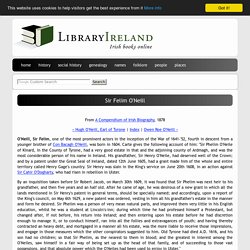
Proclamation of Dungannon - Wikipedia. Background[edit] Following the trial and execution of the Viceroy Thomas Wentworth in May 1641, Ireland was in a state of turmoil. There was growing tension between Catholics and Protestants (particularly those of a Puritan tendency) with the former generally sympathetic to King Charles while the latter supported the English Parliament and the Scottish Covenanters in the dispute that would shortly lead to the outbreak of the English Civil War.
Holdings: Portland Mss. PRESBYTERIANISM IN GLENARM by S. Alex Blair : This article first appeared in Vol. 9 of The Glynns (1981) and is presented here with additional photographs and hyperlinks. (Being a resume of part of a lecture on “Presbyterianism in the Glens” given by the author to the Glens of Antrim Historical Society in Cushendall on Friday, 19th September, 1980.
S. Alex. Blair ) Church Society - 39 Articles - History - Subscription. It had been expected in 1553 that clergy would subscribe to the Articles, but the death of Edward scuppered this. In 1571 it was again expected that clergy would subscribe to the articles, but again this never really happened. 1604 Subscription Not until 1604 did clerical subscription become a necessity under Canon law. Google Play. Holdings: House of Lords Mss. Holdings: Portland Mss. Holdings: The Ulster civil war, 1641. "The King's Commission"... The Ulster civil war, 1641. "The King's Commission" in the County Fermanagh, a document alleged to have been published by Sir Phelim O'Neill and Rory Maguire, purporting to be a commission from Charles I, to start the civil war. Saved in: At the NLI: Call number: Ir 794105 u 1 See Main Catalogue entry for Ulster journal of archaeology Elsewhere: Use WorldCat to findUlster journal of archaeology.
Use Copac to findUlster journal of archaeology. Similar Items powered by VuFind. Holdings: Holdings: The Royal Visitation of 1622, transcribed from... The Royal Visitation of 1622, transcribed from T.C.D. Ms. E.3. 6. PRESBYTERIANISM IN GLENARM by S. Alex Blair : This article first appeared in Vol. 9 of The Glynns (1981) and is presented here with additional photographs and hyperlinks. Brice, Edward (DNB00) BRICE or BRYCE, EDWARD (1569? –1636), first presbyterian minister in Ireland, was born at Airth, Stirlingshire, about 1569.